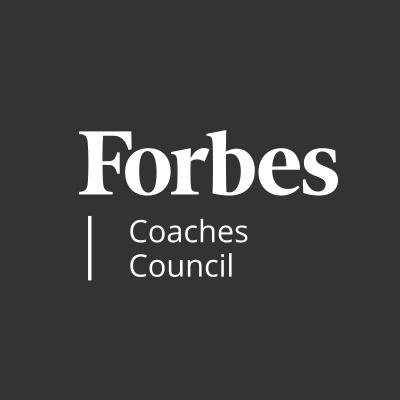With eight months of our experiment in working from home (WFH) or in a hybrid office/WFH model, some CEOs have raised legitimate concerns about developing talent, often concluding that companies must have employees co-located.
The assumption to challenge seems to be that only unique-to-the-office experiences enable a well-developed talent pipeline prepared to address today and tomorrow’s strategic challenges.
Consultant Rick Lash and I have collaborated in the past on advanced leadership training, and that past collaboration and current thinking together shaped this article.
As Rick described to me, rather than trying to replicate current development strategies, Covid-19 presents organizations with an opportunity to enhance, reinvent and significantly accelerate how they build capability for the future. “Leaders need to be more intentional in how they think about and support development as WFH environments and the supporting technology encourage more tactical and executional mindsets and behaviors,” he says. “Responding to emails, scanning online documents and participating in virtual meetings pulls more for surface/transactional processing of information versus the reflective and integrative thinking necessary for the deeper skills development and shifts in mindset that our talent needs.”
Development in our WFH/hybrid life follows the same pattern, where 10% comes from training, 20% from mentoring/coaching and 70% from experiences. Rick has seen that training that is designed for synchronous or asynchronous platforms can be quite effective at delivering even leadership training. No longer limited by travel costs, we can leverage the unique benefits of these technologies by bringing together international learning cohorts that yield a level of insight and skill-building we didn’t think was possible online, and for greatly reduced cost.
Coaching and mentoring have always relied on the discipline of leaders to identify opportunities and engage with reports, and this is more critical in the WFH/hybrid model. Leaders have been quite effective maintaining — even deepening — relationships that enable high-quality coaching and mentoring, especially when they listen well to what is really happening and connect deeply. Transformative coaching and mentoring needs intentionality and discipline that ensures the conversations happen and that we practice at doing this remotely.
WFH/hybrid work challenges our principles and mental models for using experiences to develop talent. Rick points out that office and home cultures have become blended. As he explains, physical separation from home made it easier to have distinct cultures/norms of behavior but limited where development happened. With personal lives on display and more integrated with our work lives, development of skills and growth in career happens in both settings, creating more opportunities for development.
Let’s learn from and adopt what the best regional leaders do. They have great success creating engaged teams, developing people, building culture and driving performance with little physically in-person time together. They ensure that strategy and tactical execution are integrated with sharing best practices, helping build new skills and perspectives. They are deliberate and intentional when it comes to coaching, maintaining frequent contact that produces feelings of connection and support. Highly selective as to when and on what to bring people together, they use special projects as development opportunities, helping younger talent see why engaging in a project not directly contributing to their current job can help develop new skills and broader relationships that enable career progression. These leaders develop talent by being powerful connectors, creating visibility opportunities for talent to learn and shine, both the formal and near-chance encounters that happen more easily, but hardly exclusively, in the office.
We see the following five experiences, as adapted for the WFH/hybrid model, being especially effective at developing the talent pipeline.
• Collaborations On Projects In And Outside One’s Domain.
Leaders need to explicitly help their people see these collaboration assignments as developmental and business-critical. McKinsey recently noted a significant gap in connecting learning priorities to business priorities. Learners can be trained on the tools that enable asynchronous contribution. Learning buddies can pair up to augment learning by doing, when doing is all remote. When these projects report out to senior management, leaders need to coach learners for remote presentation excellence. Leaders also enable executive understanding of how the project was developmental and encourage follow-up interactions that build new relationships. With WFH/hybrid work, a colleague who can’t relocate can still take on a full- or part-time developmental assignment in another geography.
• Oversight Of Work. At the heart of what leaders do, regular review and coaching that explicitly draws out learning from experiences is even more critical. Leading WFH/hybrid colleagues calls for deeper listening to needs resulting in careful consideration of situational delegation, providing just the right balance of direction and support that enables capability development and project excellence. With a WFH/hybrid organization, leaders need to pay particular attention to and fix clunky processes that may be getting in the way of people’s ability to do their jobs from wherever, whenever.
• Team Leadership. The ease of co-location too often leads to poorly constructed and unproductive meetings. Regional leaders quickly learn that you lose followership if you waste people’s time. Let’s teach remote leadership principles and create forums for leaders to share and learn from these remote team leadership experiences.
• Mentoring. With people far less bound by geography, there are potentially wonderful opportunities for truly two-way mentoring with others they would normally not be in touch with. Executives should look across the organization at the talent needs and be more intentional about connecting top- and mid-level leaders to younger talent, emphasizing that both parties have much to learn.
• Networking. Co-located spontaneity certainly makes networking easier. Short of having an app that uses artificial intelligence and the company’s goal, project and calendar data to trigger colleagues to connect with others they don’t know who are working on something similar, leaders use their widening networks to connect younger colleagues so they can build and extend their networks.
Going back to how we developed talent a year ago offers comfort but perhaps not success, and the cost of less flexibility might be very high. Leaders can stretch and successfully develop talent for today’s and future challenges, even in WFH/hybrid arrangements. In classic change management, let’s burn the bridge so there is no going back, and let’s invent and implement what works better at accelerating talent development.


